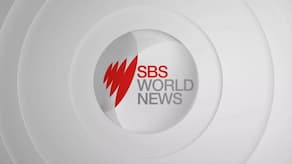In just over two months since the World Health Organization was first alerted to the current outbreak of the coronavirus disease, known as COVID-19, 79 countries have reported more than 95,000 cases and 3,280 deaths.
But just as concerning for world health authorities has been the spread of misinformation- generating fear and amounting to scenes of
When the WHO announced it was elevating the global risk of the virus to its highest level, Director-General, Dr Tedros Adhanom Ghebreyesus, cautioned against unnecessary panic and called out misinformation.
“Our greatest enemy right now is not the virus itself, it’s fear, rumours and stigma, and our greatest assets are facts, reason and solidarity,” he said in a media briefing on 28 February.
Social media platforms Facebook and Twitter have said in the past week that they will do their bit to fight the spread of “false claims and conspiracy theories.”
But what are some of the questionable claims that currently exist?
Myth: Coronavirus is man-made
One fringe theory that emerged was that the coronavirus originated from a Chinese laboratory and was connected to biological weapons research. The false claim appeared in at least two publications, the Daily Mail and the Washington Times, and was also given a boost by US Senator, Tom Cotton, when he offered the theory that coronavirus had originated in a high-security biochemical lab in Wuhan, .
“We don’t know where it originated, and we have to get to the bottom of that,” he told Fox News, “we also know that just a few miles away from that food market is China’s only biosafety level four super laboratory that researches human infectious diseases.” Mr Cotton later clarified his position, but experts were quick to dismiss the bioweapon thesis.
Mr Cotton later clarified his position, but experts were quick to dismiss the bioweapon thesis.

Republican senator Tom Cotton Source: Getty Images North America
While there are still many unknowns about the coronavirus’ origins, it’s widely accepted that the current COVID-19 outbreak was linked to a live animal market in Hubei province suggesting an initial animal-to-person spread. Later cases indicate person-to-person spread of infection.
Myth: Coronavirus cures
While theories that home remedies may cure a person of coronavirus are being shared on social media, there is currently no evidence that specific medicines are available to readily prevent or treat Covid-19. It says that some treatments are being investigated and will be tested through clinical trials, but has advised that despite being a healthy food, garlic, does not offer protection from the coronavirus. Likewise, current vaccines will not aid in staving off a coronavirus infection, given the virus is so new and different, it will need its own vaccine.
Likewise, current vaccines will not aid in staving off a coronavirus infection, given the virus is so new and different, it will need its own vaccine.

Information graphic by the WHO Source: World Health Organisation
The WHO has advised people to adhere to sensible measures like regularly and thoroughly washing hands with soap and water, avoiding excessive face-touching, and following through with good respiratory hygiene.
WHO advice for face mask use
Various health authorities have issued different advice around using face masks, with the Centres for Disease Control and Protection in the United States recommend people avoid using facemasks, while governments in Asia including Malaysia, Thailand and Vietnam have urged people to make them a part of their regular habits.
In Australia, health authorities have advised: “you do not need to wear a mask if you are healthy.” .
Given the current shortage of masks, world health authorities have also strongly advised against the general use of masks.
“Only wear a mask if you are ill with Covid-19 symptoms (especially coughing) or looking after someone who may have Covid-19… if you are not ill or looking after someone who is ill then you are wasting a mask. There is a world-wide shortage of masks, so WHO urges people to use masks wisely.”
Current deaths
In an interview with Fox News, US President Donald Trump dismissed the World Health Organization’s global fatality figure.
“I think the 3.4 per cent is really a false number,” he said in a phone interview that was broadcast live.
“Now, this is just my hunch but based on a lot of conversations with a lot of people that do this, because a lot of people will have this, and it’s very mild,” Mr Trump said. “They’ll get better very rapidly, they don’t even see a doctor, they don’t even call a doctor, you never hear about those people, so you can’t put them down in the category of the overall population, of this corona-flu and/or virus. So you just can’t do that.”
“They’ll get better very rapidly, they don’t even see a doctor, they don’t even call a doctor, you never hear about those people, so you can’t put them down in the category of the overall population, of this corona-flu and/or virus. So you just can’t do that.”

Security guards patrol outside the Huanan Seafood Wholesale Market where the coronavirus was detected in Wuhan Source: AFP
“When you do have a death… you know, all of a sudden it seems like three or four per cent, which is a very high number, as opposed to a fraction of one per cent.”
His summation, “personally, I would say the number is way under one per cent.”
According to the current WHO figures there have been more than 95,200 confirmed cases of Covid-19 globally with 3,280 recorded deaths attributed to the virus.
, the WHO chief reported 3.4 per cent of the reported global cases had died, making the comparison that the flu kills “far fewer than 1 per cent of those infected,” which is perhaps the figure Mr Trump was referencing.



